Is de-risking the beginning of the end for made-in-China goods?
Amid geopolitical tensions, the term ‘de-risking’ entered the global lexicon last year, and China has lost billions’ worth of investment. The programme When Titans Clash looks at the trends and what lies ahead for the Chinese economy.
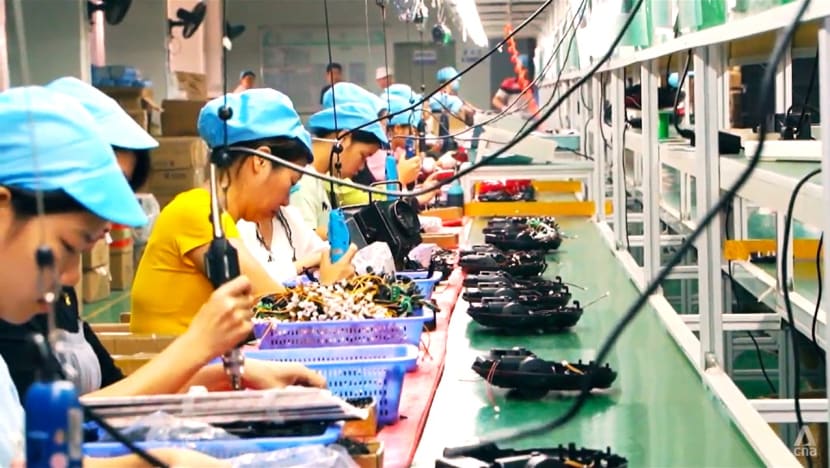
Chinese workers on an assembly line making robot vacuums. In some other companies, it is the end of the line for their manufacturing operations in China.

This audio is generated by an AI tool.
MEXICO CITY and SHANGHAI: For years, the United States’ top trading partner has been China. That has now changed — Mexico is in top spot, as of last year.
It is the culmination of a trend that began during the Trump presidency, when tariffs were slapped on Chinese exports to the US.
It is also an example of the top trends in “de-risking” amidst all the geopolitical tensions: nearshoring or friend-shoring. Nearshoring means to locate production close to one’s consumers; friend-shoring is the policy of locating production in friendly countries.
In Mexico, the result is a manufacturing boom. One company that has grown, for example, is original equipment manufacturer Creation Technologies, whose customers include Fortune 500 companies.
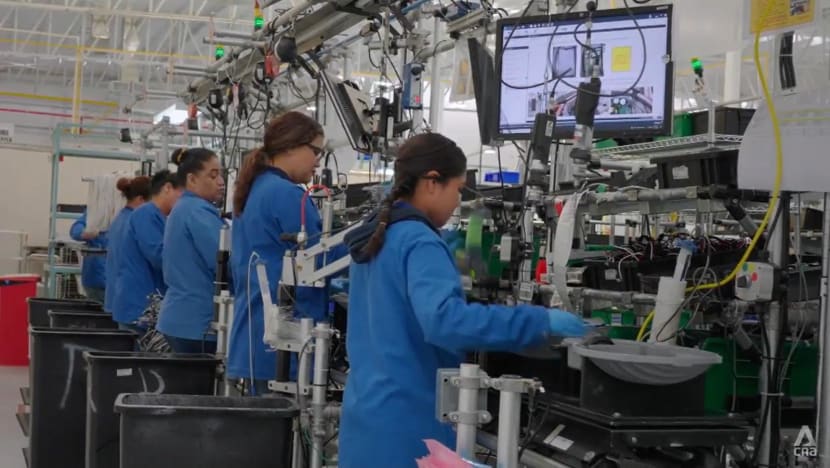
With many of those customers shifting some of their manufacturing operations from China to Mexico, the company’s revenue growth has doubled in five years, said Julio Bello, its vice-president and general manager in Hermosillo city.
“In the next six months, we’re going to be adding some lines and expanding our capacity. That’s going to support our plans for 2024 and 2025 growth.”
Another beneficiary is Collectron International Management, which helps foreign companies relocate to Mexico. Staff head count has increased from 8,000 to 10,000, said Collectron Group president and chief executive officer Maria Elena Gallego.
The US-China trade war that began in 2018 is not the only reason foreign investment is pouring into her country. The pandemic is another. “And of course, it has escalated (due) to the conflict between Russia and Ukraine,” she said.
It helps that costs in Mexico are competitive, and the workforce is skilled. “We’re fortunate to be in an area with a lot of universities around and a highly talented and skilled workforce,” said Bello.
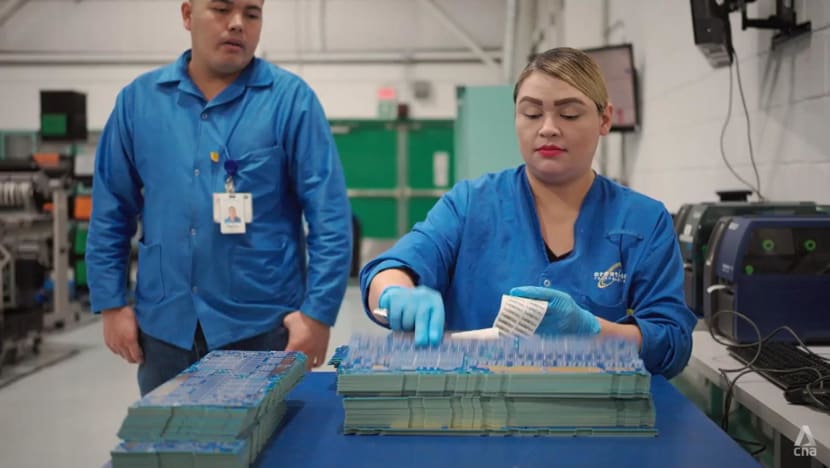
But it is not the only country companies are moving to, and US firms are not the only ones moving out of China.
HP has started shifting part of its laptop production from its main production base in Chongqing to Mexico as well as Thailand. Dell is doing the same.
Apple has shifted part of its production to India, while Japan’s Mitsubishi Motors has ended production in China. As de-risking intensified, foreign investment in China turned negative for the first time since 1998 in the third quarter of last year.
Between December 2021 and last June, global investors also pulled about 1.37 trillion yuan (S$258 billion) out of Chinese stock and bond markets, then sold another 219 billion yuan of mainland Chinese shares between August and last month.
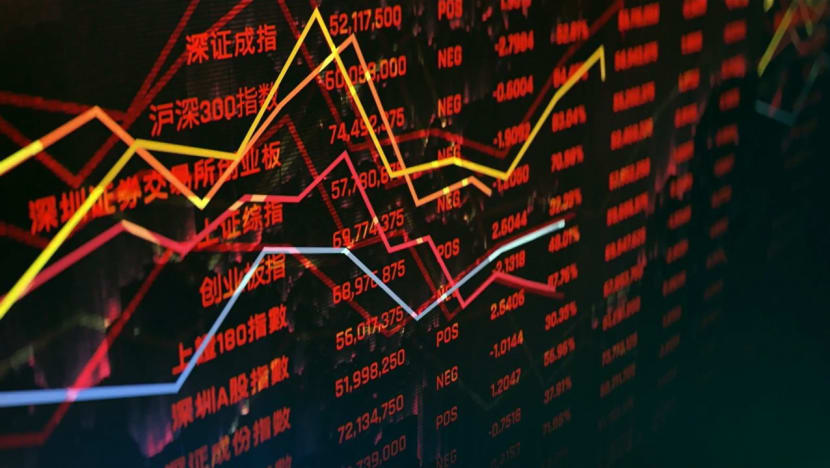
“The trend lines are already pretty far along in terms of companies deciding that their interests are better served by having more diversification,” observed Ryan Hass, the director of the Brooking Institution’s John L Thornton China Centre.
“President Xi (Jinping) and China’s leaders would like to believe that a better (geopolitical) environment … will compel companies to continue … expanding their footprint in China. The reality, though, I think, is much more complicated.”
So is this the beginning of the end for made-in-China goods, asks the programme When Titans Clash.
WATCH: China vs the West — Does trade war spell end to made-in-China goods? (45:47)
DRIVEN BY CHINESE INVESTMENT TOO
One thing is clear: Manufacturing is on the march. Chinese companies, too, are going to Mexico, mainly to be closer to their American customers. Under the US-Mexico-Canada Agreement, goods made in Mexico also can enter the US tariff-free.
Since 2018, Chinese enterprises have poured more than US$8.29 billion (S$11.09 billion) into Mexico-based projects, according to data from research portal Latin America and the Caribbean Network on China.
When Jorge Zermeno, the former mayor of Torreon — not too far from the US border — made a trip to China, there was “plenty of interest from Chinese companies who’ve come to Torreon, who’ve seen what we’re doing”, he said.
They even asked us to set some land aside for Chinese companies.”
In neighbouring Monterrey city, more than 10 brands from China have set up production.
The companies in Mexico include car parts makers Ningbo Xusheng Group, Ningbo Tuopu Group and Bethel Automotive Safety Systems, home appliance maker Hisense and furniture manufacturer Kuka Home.
“Chinese companies are setting up or forming joint ventures in other countries. Vietnam is one clear case as well as Mexico,” observed Anthony Saich, the director of the Rajawali Foundation Institute for Asia and Daewoo professor of international affairs at the Harvard Kennedy School.
“(China) is using those countries to become the exporter into the US.”
WATCH: Is Mexico China’s back door to the US? (6:17)
The increase in many of these economies’ exports is then driven by increased imports from China, said World Trade Organisation research economist Victor Stolzenburg.
“In effect, there seems to be triangular trade, which really doesn’t look like a lot of de-risking. It’s just the same trade happens more indirectly and less transparently. And I don’t think this is sustainable,” he said.
“What we already see is that it drives up prices quite a bit.”
For all the talk about de-risking now, it was China’s government that encouraged its companies to set up overseas factories 10 years ago, in the grand scheme known as the Belt and Road Initiative (BRI).
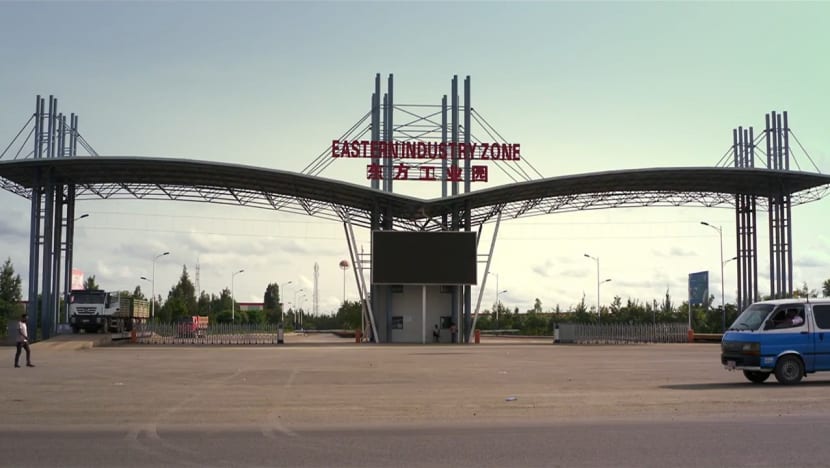
Take, for example, the Huajian shoe factory in Ethiopia: Its annual production capacity of three million pairs of shoes for export as of last May makes it one of Ethiopia’s largest export enterprises.
“More and more Chinese companies have tried to shake off the pressure of rising costs domestically and started considering Africa as a viable option,” said Yin Xinjun, vice general manager for Huajian Industrial Holding’s Ethiopia division.
“Africa is a populous continent, equivalent to China when it was opening up in the 70s and 80s. What it lacks are funds, know-how and systems. So Chinese companies that have hit a bottleneck domestically are looking to invest.”
Under the BRI, thousands of Chinese companies have gone overseas in search of lower land costs and wages.
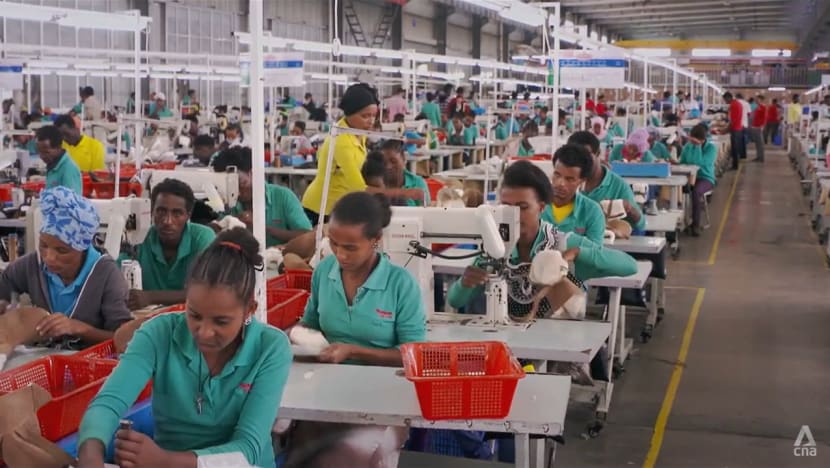
“Even without the geopolitical tensions … or other such conflicts, the inevitable relocation of Chinese industries would still occur,” Xu Qiyuan, the head of the Institute of World Economics and Politics, Chinese Academy of Social Sciences.
“Since 2007, we’ve noticed … the continuous appreciation of the Chinese yuan’s exchange rate, the ongoing increase in labour costs and growing domestic environmental pressures, among other challenges.”
Large-scale manufacturing offshoring has happened several times before. In the 60s and 70s, for example, developed countries moved manufacturing to developing areas such as Taiwan, South Korea, Singapore and Hong Kong.
Today, China is also moving towards a more service-oriented industry, like the economies of the G7 countries, which are now looking to de-risk their relationship with Beijing.
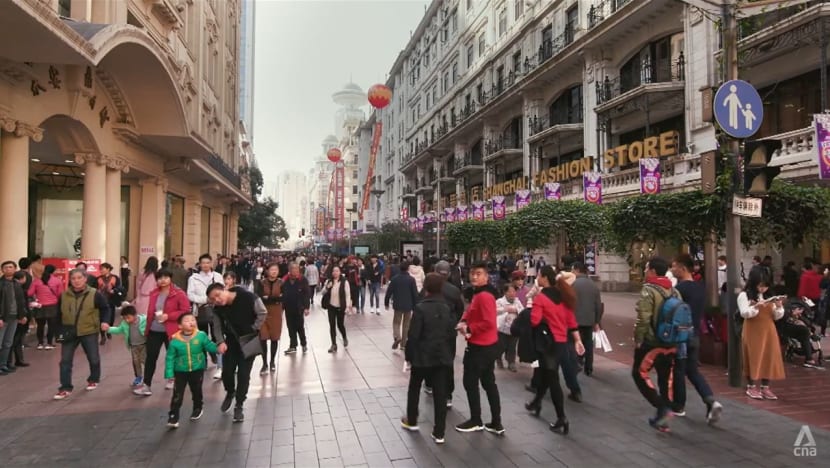
“We’ve reached a stage that resembles an inverted U-shaped curve, approaching the peak or descending from the peak,” said Xu. “This means the proportion of manufacturing in the economy has already peaked and is beginning to decline.”
‘IN CHINA FOR CHINA’
Despite the geopolitical tensions and China’s supply chain restructuring, some titans of industry are doubling down on their Chinese investments.
Tesla, for example, has a mammoth factory under construction next to its existing factory in the Lingang area of Shanghai. And it will not be manufacturing only cars.
Last April, Tesla inked a deal with the city to mass-produce its Megapack, “a powerful battery that provides energy storage and support, helping to stabilise the grid and prevent outages”, as the company describes it.
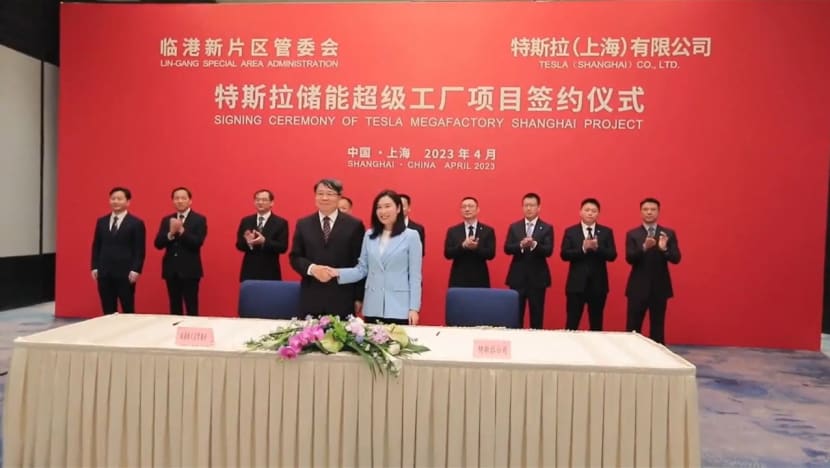
Large projects like these would not have possible without the Chinese government’s support.
When China reopened last year after the pandemic, Tesla CEO Elon Musk met top officials and was quoted by the Chinese press as saying he had “full confidence” in the Chinese market.
“Elon had stated a goal of selling 20 million vehicles by 2030 for Tesla. A large part of that … is to sell (them) into the China market,” said Tu Le, the founder and managing director of Sino Auto Insights.
Nearly 26 million new cars were sold in China last year, compared to nearly 13 million in Europe and almost 15.5 million light vehicles (passenger cars and light duty) in the US.
A 20 per cent market share in China would get Tesla “well on their way to that 20 million number”, said Tu.
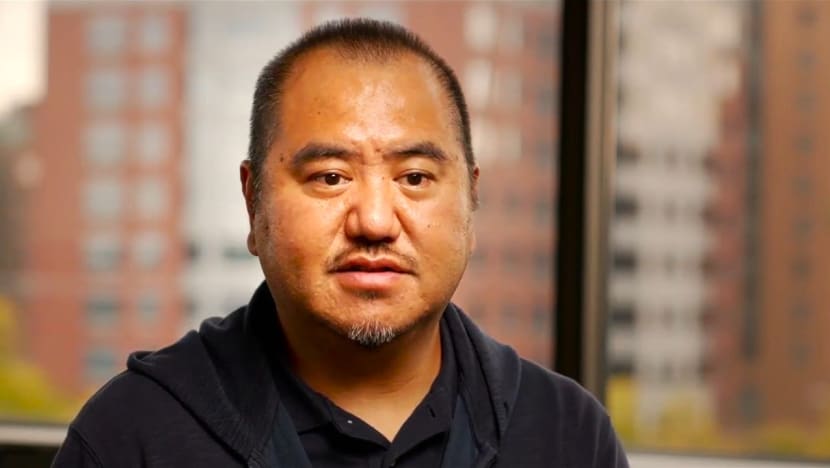
Like Tesla, many American and European companies depend on China for a large portion of their sales.
In 2006, foreign businesses in China exported roughly seven times the amount they sold domestically, according to Xu. Around 2012, the ratio was nearly equal, “fluctuating in the range of around US$900 billion to US$1 trillion”.
By 2021, foreign companies’ domestic sales were more than double their exports. “If you consider foreign businesses as whole, then two-thirds of their business is ‘in China for China’ — producing in China and selling in China,” Xu said.
That is among the reasons why German company BASF is spending €10 billion on a new chemical production complex in China, and why Volkswagen is reinforcing its presence with plans to invest around €1 billion in a new China centre.
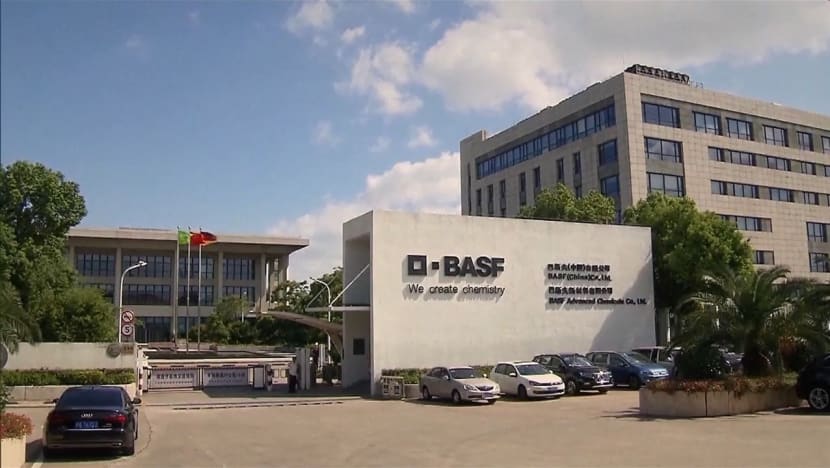
With China’s rising middle class, Wang Huiyao, the founder and president of the Beijing-based Centre for China and Globalisation, believes multinationals realise that “China has huge potential”.
“In a developed country like the US, (a population of 1,000) may have 800 cars, … but in China probably it’s only 200 (cars). So there’s a huge (growth) wave for China,” he said.
US businesses in China, however, have a “less optimistic outlook”, according to the American Chamber of Commerce in Shanghai.
Its survey of member companies found that 31 per cent were increasing their investment in China last year from the year before, 22 per cent were decreasing their investment, and 40 per cent were redirecting or planning to redirect investment originally planned for China, mainly towards South-East Asia.
Related stories:
CAN CLEAN TECH BE DE-RISKED?
The world cannot do without some made-in-China products, however. Just last year, for example, China became the world’s largest passenger car exporter, overtaking Japan.
China is also the leader in electric vehicles (EVs). While it accounted for only 4.2 per cent of global EV exports in 2018, its share in 2022 was 35 per cent, according to the International Energy Agency.
In contrast, Japan was the largest EV exporter in 2018 with a 24.5 per cent share, but this plummeted to 9.3 per cent in 2022.
The world’s top seller of EVs is now Chinese maker BYD. Tu, whose first job was at a car assembly plant in Michigan, has seen the difference in BYD’s quality compared to before.
“When I first landed in Beijing in 2009, I got into a BYD, and … it was pretty bad,” he recalled. “The doors were paper-thin. You could hear everything. The fit and finish of the interiors weren’t great.”
At last year’s Shanghai Auto Show, he saw BYD was not the only Chinese EV maker leaving the world’s biggest car brands to play catch-up.
There was also Zeekr, whose “little car” Zeekr X he waited 10 minutes to see “because there were so many people who wanted to see it”.
“The management of these European automakers also saw this, and then in disbelief, they got into the vehicles themselves,” Tu recounted.
“They closed the door, they heard the sound that matches what they were traditionally able to do, and then looked at the technology on the instrument panel and the infotainment system. And jaws … dropped.”
WATCH: Will the world give up European cars for made-in-China electric vehicles? (10:17)
At that same car show, Honda’s executive vice-president and representative executive officer, Shinji Aoyama, declared: “China is the world’s most advanced country in terms of (vehicle) electrification.”
But it was not always rosy for China’s EV makers. Companies such as Nio, XPeng and Li Auto were set up around 2014 and 2015 and were struggling.
Nio almost went bankrupt in 2020, but the Hefei government underwrote 7 billion yuan in funding for the company, and it was able to “weather that storm”, said Tu. “Now they have six or seven products in the market.”
It is no secret that government policy has been crucial to China’s EV industry. But the growth of these Chinese companies is prompting other governments to push back.

In September, the European Commission launched an anti-subsidy investigation into EV vehicles from China, with its president, Ursula von der Leyen, saying: “Europe is open to competition but not for a race to the bottom. … De-risk, not decouple.”
On the same day, in what was widely seen as a retaliatory move, China extended anti-subsidy duties on imports of European Union potato starch for five years.
Tu envisages the possibility of “repercussions in the Chinese market for the European brands” if there is “any real protectionism” in the European EV market that would hit China.
Not only do some of China’s EV makers rank among the largest in the world, six of the 10 largest EV battery makers are also Chinese — the country accounts for more than 70 per cent of market share by shipments.
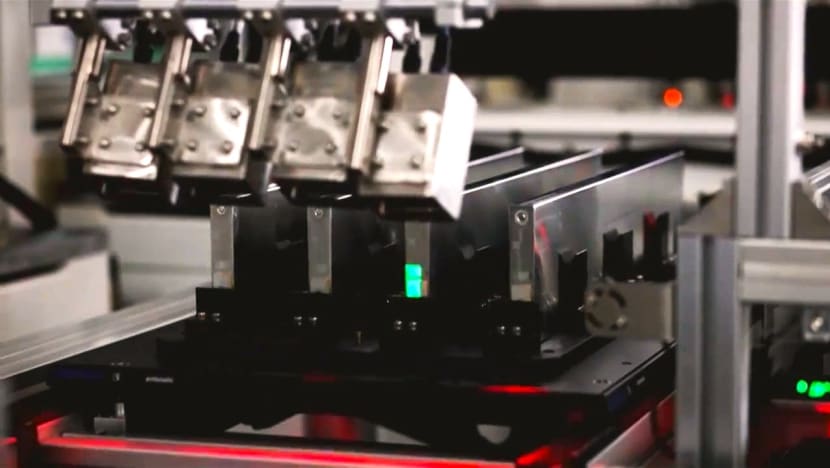
China also controls 70 per cent of global solar panel production and supplies at least 50 per cent of the world’s wind power equipment.
So there is some question as to whether Western countries can de-risk their green tech supply chains if they are to meet climate change goals.
“My sense, from looking at how the world’s been able to manage this (climate) transition, is it’ll be very expensive if not impossible,” said Lee Kuan Yew School of Public Policy dean Danny Quah.
“If you want to save the planet, you can’t go on about somebody’s values being different from yours. Save that for some other time.”
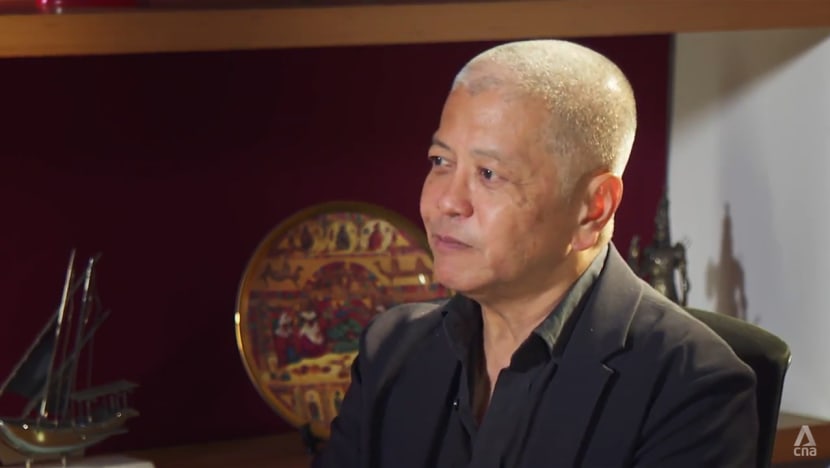
Hass, who was the China director on the US National Security Council (2013 to 2017), agreed that the US should do “whatever it can to accelerate the transition to renewables and green energy”.
“The simple reality is that much of the leading technology in the world resides in China,” he noted. “If the US wants to move forward as quickly as possible, then it’ll need to do so in partnership with China.”
Watch this episode of When Titans Clash here.



















